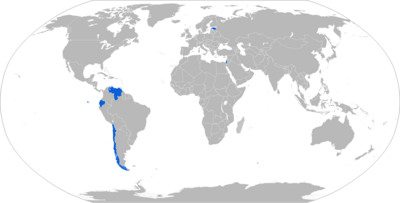MAPATS
This article includes a list of references, related reading, or external links, but its sources remain unclear because it lacks inline citations. (January 2013) |
| MAPATS | |
|---|---|
 MAPATS missile | |
| Type | Anti-tank missile |
| Place of origin | Israel |
| Service history | |
| Used by | Israel Defense Forces |
MAPATS (Man Portable Anti-Tank System, also a Hebrew word for explosion) is a laser-beam riding[1] anti-tank guided missile developed by Israel Military Industries as a possible successor to US wire-guided BGM-71 TOW.
MAPATS is capable of day and night operation, while the gunner has to direct his laser designator on the target until the missile impacts. First revealed in 1984, it has no trailing wire; so it can be fired over water at naval targets or from sea to land, unlike wire-guided ATGMs. The launcher has an elevation capacity up to +30°.[2] Externally, MAPATS is very similar in appearance to the TOW 2.[2]
Versions
The newer version of MAPATS, developed in the early 1990s, has a new engine and better laser guidance. Some new warheads were developed by Rafael Advanced Defense Systems, including the tandem HEAT warhead and the HE bunker buster warhead.
Operators

Characteristics
- Effective range: 6,000 meters[1]
- Length: 145 cm[2]
- Caliber: 156 mm[2]
- Weight
- Propulsion: 2 stage solid rocket motor
- Penetration: 1,290 mm - 1,620 mm[3]
- Guidance: laser-beam riding[1]
- Warhead: HEAT,[2] HE[2]
Comparable systems
Notes
MAPATS is sometimes nicknamed Hutra (in Hebrew: חוטרא) - an Aramic word for "stick".
